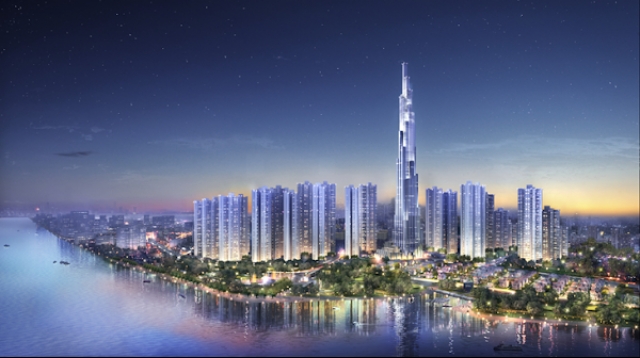Vietnam has been listed among Asian markets that have a full house of positive factors for the long-term growth of real estate as an investment class, according to JLL’s latest Global Capital Flows Research.

The report stated that: “India, Indonesia and Vietnam have populations of 1.3 billion, 261 million, and 93 million, respectively, and all have a growing middle class, rapid urbanization, a youthful demographic, and improving governance and real estate transparency.”
“Vietnam continues to attract significant interest from foreign investors in all sectors of the property market,” said Mr. Stephen Wyatt, Country Head of JLL Vietnam. “The market has become more attractive recently on the back of a rise in purchasing power, growth in consumer retail spending, an expansion in the urban population and young demographics.”
JLL’s Global Real Estate Transparency Index (GRETI) 2018 noted that Vietnam is moving towards the cusp of the next tier in transparency. It has now the essential components that would enable it to move forward and reach its full potential for sustainable development in the future.
The Global Capital Flows Research also showed that investors are increasingly piling into real estate in Asia, where investment volumes this year have hit fresh records, with $42 billion in the second quarter, up 26 per cent from the same period in 2017. First half volumes were at $81 billion, up 29 per cent from a year earlier and the highest on record.
The pace of deal-making in Asia-Pacific has raced ahead of other world regions, which started their recovery from the previous cyclical downturn earlier. First half transaction volumes rose 9 per cent in both the Americas and Europe. The boost from Asia-Pacific has had an impact on global volumes, which in the first half of 2018 rose 13 per cent to $341 billion. That total was 13 per cent higher than 2017 and the best first-half performance since 2007.
Transaction volume growth in Asia-Pacific is being driven by “a continued cyclical recovery in developed markets such as Australia and Japan alongside secular growth - from a low base - in developing markets,” said Mr. Pranav Sethuraman from JLL’s global capital research team. Nearly all of Asia-Pacific’s largest markets recorded positive investment growth in the first half, with Hong Kong, South Korea and Australia emerging as the top performers with a combined average growth rate of 110 per cent over 2017. And despite double-digit declines in the second quarter, overall activity was up 3 per cent and 7 per cent in China and Japan, respectively, due to their strong start to the year.
However, the biggest potential for growth comes from the more immature markets, where a number of factors - such as a lack of transparency - are playing a role in impeding investment, said Mr. Sethuraman. As these factors dissipate these markets will be significant growth drivers. “Large markets that have very supportive demographics, such as India, Indonesia and China, support a compelling case for future growth in the region,” he said.
The latest research from JLL shows that the gap between the risk-free rate and prime real estate yields continues to close. As investment has flowed into the global real estate sector, asset prices have gone up and prime office yields have compressed by 221 basis points from their peak in Q1 2009 to 4.69 per cent in Q2 2018, their lowest point in the current cycle.
Despite modestly rising interest rates, JLL believes there is further room for yield compression for prime real estate as, throughout the current cycle, yields appear to be more dependent on market fundamentals rather than interest rates. With Asia-Pacific’s positive fundamentals, it has the best prospects for performance and for attracting more investment.
VN Economic Times